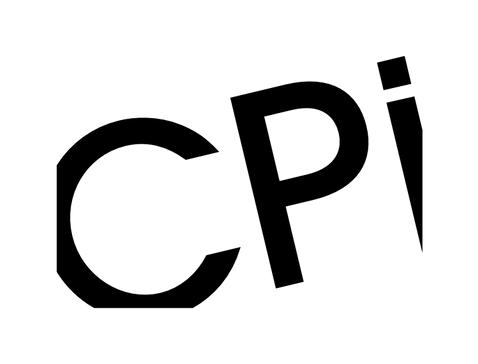

Collaborative Robot Risk Assessments
Collaborative robots (cobots) are revolutionising manufacturing and automation, enabling humans and robots to work side by side. However, collaborative applications introduce unique safety challenges that must be carefully managed to prevent accidents and ensure compliance.
At Cobots and Machinery Safety, we specialise in assessing and validating collaborative applications to the latest standards, giving you confidence that your operations are both efficient and safe.
Collaborative Applications – Safe Integration of Cobots and Human Interaction
Collaborative robots (cobots) are transforming modern industry — allowing humans and robots to work side by side in shared spaces. But with this innovation comes new responsibility: ensuring that every collaborative robot application is designed, installed, and operated safely.
Our collaborative robot safety and compliance services help manufacturers, integrators, and end users achieve full compliance with the latest ISO 10218-2 standard and ISO/TS 15066, as well as PUWER and UKCA requirements.
What Are Collaborative Applications?
Collaborative applications refer to robotic systems designed to work in direct cooperation with people — without traditional safety fences or cages. These systems rely on advanced sensors, force limits, and safety control systems to prevent injury while maintaining productivity.
However, to be legally and safely implemented, every collaborative setup must undergo a detailed cobot risk assessment and validation process to ensure compliance with recognised international standards.
The Updated ISO 10218-2:2025 Standard
The new ISO 10218-2 standard replaces the previous 2011 version to provide updated guidance for industrial and collaborative robot safety.
Key updates include:
-
Enhanced risk assessment and validation requirements for collaborative applications
-
Updated terminology and definitions to align with functional safety standards (ISO 13849-1 / IEC 62061)
-
Clearer differentiation between traditional industrial robots and collaborative robots (cobots)
-
Greater emphasis on system-level safety integration — not just the robot arm
At Cobots and Machinery Safety, we ensure that your collaborative robot systems fully comply with ISO 10218-2 and other applicable safety standards — helping you stay ahead of evolving legislation and HSE expectations.
When Should a Collaborative Robot Risk Assessment Be Carried Out?
A collaborative robot safety assessment should be conducted:
-
Before installation or commissioning of any new collaborative robot
-
After system modification, programming, or workspace changes
-
Following any incident or near miss involving human-robot interaction
-
Periodically, as part of ongoing PUWER and ISO 10218-2 compliance reviews
Regular reviews ensure your cobot applications remain safe, validated, and aligned with the latest safety standards.
Safe, Compliant, and Productive Collaboration
Collaborative robots offer incredible benefits — but only when safety and compliance are built in from the start. Our collaborative application safety and risk assessment services help you design and maintain systems that are efficient, legally compliant, and safe for human interaction.
Book your Collaborative Robot Risk Assessment today and ensure compliance with ISO 10218-2, ISO/TS 15066, and PUWER

Ensure Your Robots Operate Safely and Compliantly
Comprehensive Collaborative Application Assessments
Our team evaluates your collaborative robot setups in accordance with EN ISO 10218-2, which now incorporates the guidelines previously covered in ISO/TS 15066.
We assess the entire application, including:
-
Human-robot interaction zones
-
Force and pressure during contact
-
Guarding and sensor systems
-
Operational procedures and risk reduction measures
By reviewing both design and operational factors, we ensure that your collaborative applications meet the latest safety requirements and protect operators under all foreseeable conditions.
Force and Pressure Testing
A critical part of collaborative robot safety is verifying that any human contact stays within safe limits. Using advanced testing equipment, we perform force and pressure testing of your application to measure interaction levels and confirm compliance with EN ISO 10218-2. This ensures your cobots operate safely during normal operations and foreseeable incidents.
Learn more about the force and pressure testing here
Clear, Actionable Reporting
After assessment and testing, you receive a comprehensive collaborative application safety report including:
-
Risk analysis and compliance verification
-
Force and pressure test results
-
Recommendations for safety improvements or operational adjustments
-
Documentation to support CE/UKCA marking and regulatory compliance
Our reports are clear, practical, and designed to help you implement improvements immediately while maintaining full compliance.
Ongoing Support & Safety Partnership
Collaborative applications evolve over time, and safety must be maintained throughout their lifecycle. We provide guidance for system modifications, periodic re-validation, and long-term compliance management. By partnering with us, you gain a trusted advisor who ensures your collaborative applications remain safe, efficient, and compliant.
Why Choose Cobots and Machinery Safety?
Expertise in Collaborative Applications
Extensive experience with industrial and manufacturing cobots.
Force and Pressure Testing
Advanced tools to measure human-robot interaction and verify compliance with EN ISO 10218-2.
Standards
Focused
Compliance with CE, UKCA, PUWER, and the latest collaborative robot safety standards.
Ensure your applications are safe and compliant?
Book Your Collaborative Application Safety Assessment Today

Our Valued Clients
What Our Customer's Say
“Cobots and Machinery Safety have been adopted within our business as the go to source for information around safety compliance within the relatively new field of collaborative robots. It’s been an absolute pleasure working with Matt to ensure that we, as a company, remain up to date with the best practice techniques for cobot use within real world applications; and more importantly the latest safety legislation relating to the new technology.
In detail, we have worked with Cobots and Machinery Safety to ensure our technical and sales employees are fully educated and can speak to clients confidently and with accuracy. So far, the engagement has led to further development within our own product range and the systems we employ to provide safe reliable systems to the market. We have on countless occasions recommended Cobots and Machinery Safety to our customer base, and will continue to do so.”
Oliver Selby - Robotics Business Development Manager - Fanuc





















